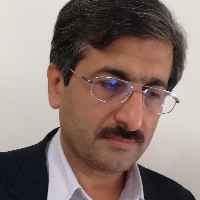The Economic Growth and Income Distribution in Iran
Author(s):
Abstract:
Objective
Relationship between economic growth and income distribution is one of the main economic matters that has attracted the attention of economists especially development economists to itself and different views have been expressed about it. A group believing the existence of conflict between fairly income distribution and economic growth count the much uneven income distribution as necessary condition in early growth stages because with an unbalanced income distribution, the rich who have high propensity to saving relative to the other social groups save and accumulate more capital and protect the faster growth with new investments. On the other hand, opponents of this theory ascribe incorrect the generalization this behavior to the rich in developing countries. They believe that increasing inequality don’t affect on saving and capital accumulation Also it is an obstacle in growth path through decreasing labor productivity and demand for domestic production. In this context, Kuznets claims that economic growth increases the income inequality in early stages then the inequality is balanced and it’s finally reduced. This theory has been tested in different countries and has had various results. The Kuznets hypothesis’ test in Iranian economy and obtaining interdependence between economic growth and income distribution, for the sake of justice issue in value basics and social sensitivities has considerable importance. Method
In this article we estimated growth and distribution models in Iran by econometrics methods. Findings
Articulating the mutual relations between economic growth and income distribution is a very challenging area of economic theories. One of the most significant hypotheses about the impact of economic development on income distribution is Kuznets hypothesis. According to Kuznets hypothesis there is an inverted U shape relationship between index of income distribution and income per capita. In other words, Kuznets hypothesis states that at early phases of development the income disparity increases but in later phases of development the inequality decreases. Considering the conclusion of this study, and based on available statistical data from 1968-2003, the suggested pattern to investigate the factors that have an impact on income distribution and the level of economic inequality in Iran, is a new Model that rejects Kuznets hypothesis in Iran. Results
According to the resultants of calculation of model 2 from table 1, it could be suggested that to reduce the level of economic inequality in Iran, economic policies must be directed to the agricultural growth, the sector that includes the less skilled and low-income segments of the population. The empirical observations imply that in the development process, the industrial sector has a pioneer role and the role of agriculture is reduced. This has pushed many countries of the world to accept policies that have negative impacts on agriculture and emphasize on transferring investment resources from agriculture to industries and general sector. (Not that the development policies in 1950s and 1960’s, favored ‘taking the excess capital from the agricultural sector’, and investing it in other developing sectors of economy). it is illustrated that how combination and share of sectors in economic growth affect on income distribution methods. One the major factors of unequal income distribution in Iran is the presence of sectoral duality. Implementing policies to create an economic balance among existing sectors, not only could reduce the present income inequality, but also could create a sustainable economic growth. These policies could cover areas such as research, irrigation and agricultural development, rural education, creation of rural infrastructures (roads, electricity, communications), and could reduce of rural poverty and regional inequality (Shifting geographical concentration). On this basis, in present conditions of our country that income distribution is imbalanced and the level of national income is below average, the distribution model along with growth or pro poor growth is strongly suggested, because poverty reduction and income growth, not only are compatible, but also are related in practice.Keywords:
Language:
Persian
Published:
Social Welfare Quarterly, Volume:7 Issue: 28, 2008
Page:
57
magiran.com/p587581
دانلود و مطالعه متن این مقاله با یکی از روشهای زیر امکان پذیر است:
اشتراک شخصی
با عضویت و پرداخت آنلاین حق اشتراک یکساله به مبلغ 1,390,000ريال میتوانید 70 عنوان مطلب دانلود کنید!
اشتراک سازمانی
به کتابخانه دانشگاه یا محل کار خود پیشنهاد کنید تا اشتراک سازمانی این پایگاه را برای دسترسی نامحدود همه کاربران به متن مطالب تهیه نمایند!
توجه!
- حق عضویت دریافتی صرف حمایت از نشریات عضو و نگهداری، تکمیل و توسعه مگیران میشود.
- پرداخت حق اشتراک و دانلود مقالات اجازه بازنشر آن در سایر رسانههای چاپی و دیجیتال را به کاربر نمیدهد.
In order to view content subscription is required
Personal subscription
Subscribe magiran.com for 70 € euros via PayPal and download 70 articles during a year.
Organization subscription
Please contact us to subscribe your university or library for unlimited access!



